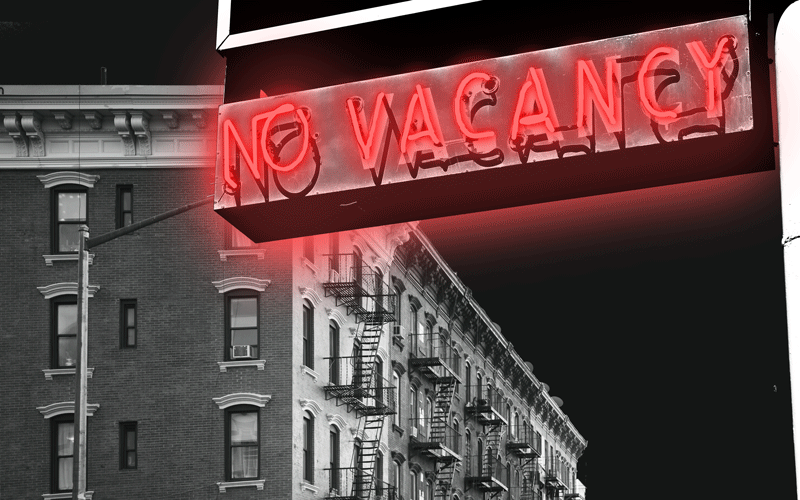The simplest explanation for New York City’s housing crisis is that there isn’t enough housing.
What’s complicated is reaching a consensus about the causes and solutions, but new data show just how severe the shortage is: Available rentals are scarcer than they have been in 56 years.
The city’s Department of Housing Preservation and Development announced Thursday that the city’s vacancy rate fell to 1.4 percent between January and mid-June 2023, with only 33,000 apartments available for rent.
That’s the lowest rate recorded since 1968, one year before New York introduced the rent stabilization system that restricts rents on more than 1 million apartments today.
The numbers come from the latest New York City Housing and Vacancy Survey, which is usually conducted every three years. The rate is calculated by dividing the number of unoccupied units available for rent by the total number of rentable units.
The survey found, as usual, that the lack of availability was most pronounced at the lower end of the market. The vacancy rate for apartments marketed for less than $2,400 a month was below 1 percent.
Vacancy stats have become a thorny issue in recent years. Landlord groups and government agencies have presented conflicting counts of how many rent-stabilized apartments are vacant.
Owners argue that tens of thousands of units sit empty because owners cannot charge enough rent to pay for renovations to make them rentable.
The survey, done in coordination with the U.S. Census Bureau, found that more than 41,000 units were not available for rent because they were undergoing or awaiting renovation. The city’s vacancy rate does not capture these units because they are not on the market.
Gov. Kathy Hochul delayed the previous housing survey to 2021, allowing for Covid-era vacancies to abate. The rate that year was 4.54 percent, up from 3.63 percent in 2017 but still below the 5 percent threshold that defines a “housing emergency” and preserves rent stabilization.
The vacancy rate had risen above 5 percent early in the pandemic, raising the possibility that price controls would end.
In a press release, the Adams administration framed the low vacancy rate as a reason to pass the zoning changes proposed in its City of Yes for Housing Opportunity text amendment, and for the state to replace the expired property tax break 421a and enact other reforms to boost the housing supply.
“This clearly means we need to do more at all levels of government and in partnership with the private sector to address this growing crisis,” Adolfo Carrión Jr., commissioner of the Department of Housing Preservation and Development, said in a statement.
Read more



